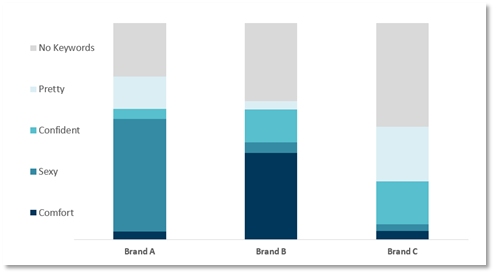Asking consumers to rate your brand across a pre-determined set of attributes provides valuable feedback on how you stack up against competitors. It also helps guide promotional strategies.
While this solicited feedback is extremely beneficial in uncovering insights, linking unsolicited feedback via social media conversation can be very valuable in understanding the full picture that consumers paint of your brand (e.g. how are they talking about your brand on their own, without directly responding to a question).
For instance, an apparel manufacturer might conduct a yearly brand health study asking consumers to rate their brand across attributes such as pretty, confident, sexy, and comfort. The question could look something like “Thinking about each of the companies below, rate how well you think each of these attributes describe that company, using a 10 point scale where 10 is Strongly Agree and 1 is Strongly Disagree”. Insight gathered from this solicited feedback can be extremely valuable in determining how this apparel manufacturer is perceived compared to key competitors.
To uncover another layer of consumer insight, we can use social media analysis to look at the same apparel brands and attributes to get a lens into unsolicited consumer feedback (e.g. how often are they talking about the brand and target attributes). The chart below is one example of how KS&R’s Social Insight Exchange team (SIX) looked at this unsolicited feedback from social media. The analysis reveals social conversation around Brand A mentions sexy more often, while Brand B is linked to comfort and Brand C confident and pretty.

Tying it all together: linking solicited and unsolicited feedback allows brands to get a unique lens into consumer feedback. Not only do brands have the chance to directly ask consumers about specific attributes, they can then determine if consumers are making that connection without being prompted (using their conversations on social media).
In the example above, Brand C could discover they are rated highly on the attribute sexy in solicited feedback but when consumers are actually talking about the brand on social media (unsolicited feedback), sexy is less top of mind (compared to confident and pretty). Brand C can then use this insight to refine their promotional strategy.
A well-rounded vision of consumers can lead to greater success. KS&R’s Social Insight Exchange (SIX) team partners with our primary research experts to ensure our clients have access to many different sources of information related to consumer perceptions.
How can tying solicited and unsolicited feedback help bring a comprehensive picture of your customers into focus?


